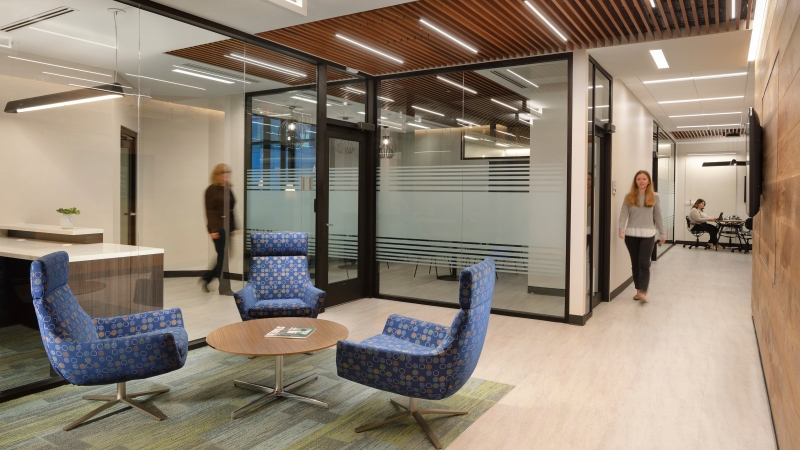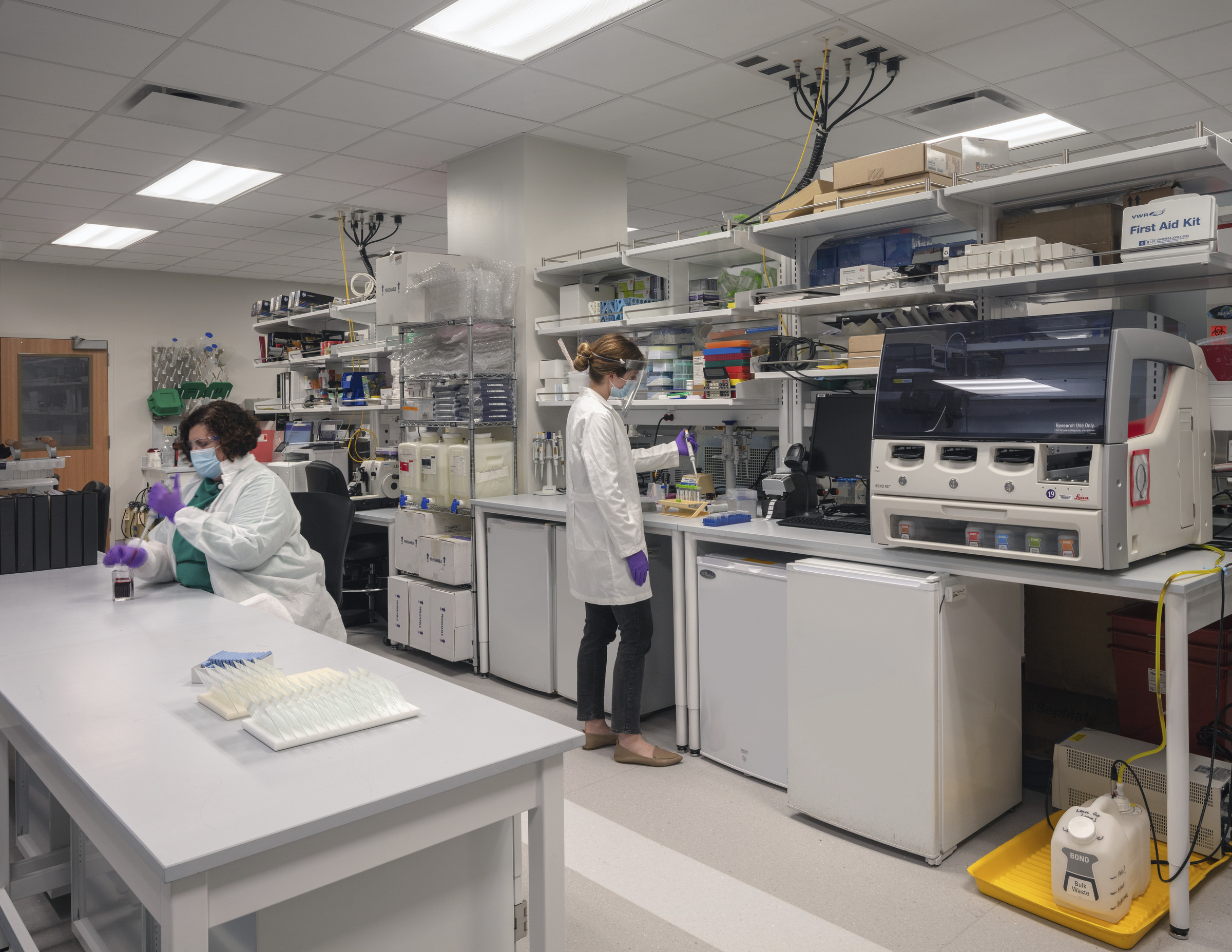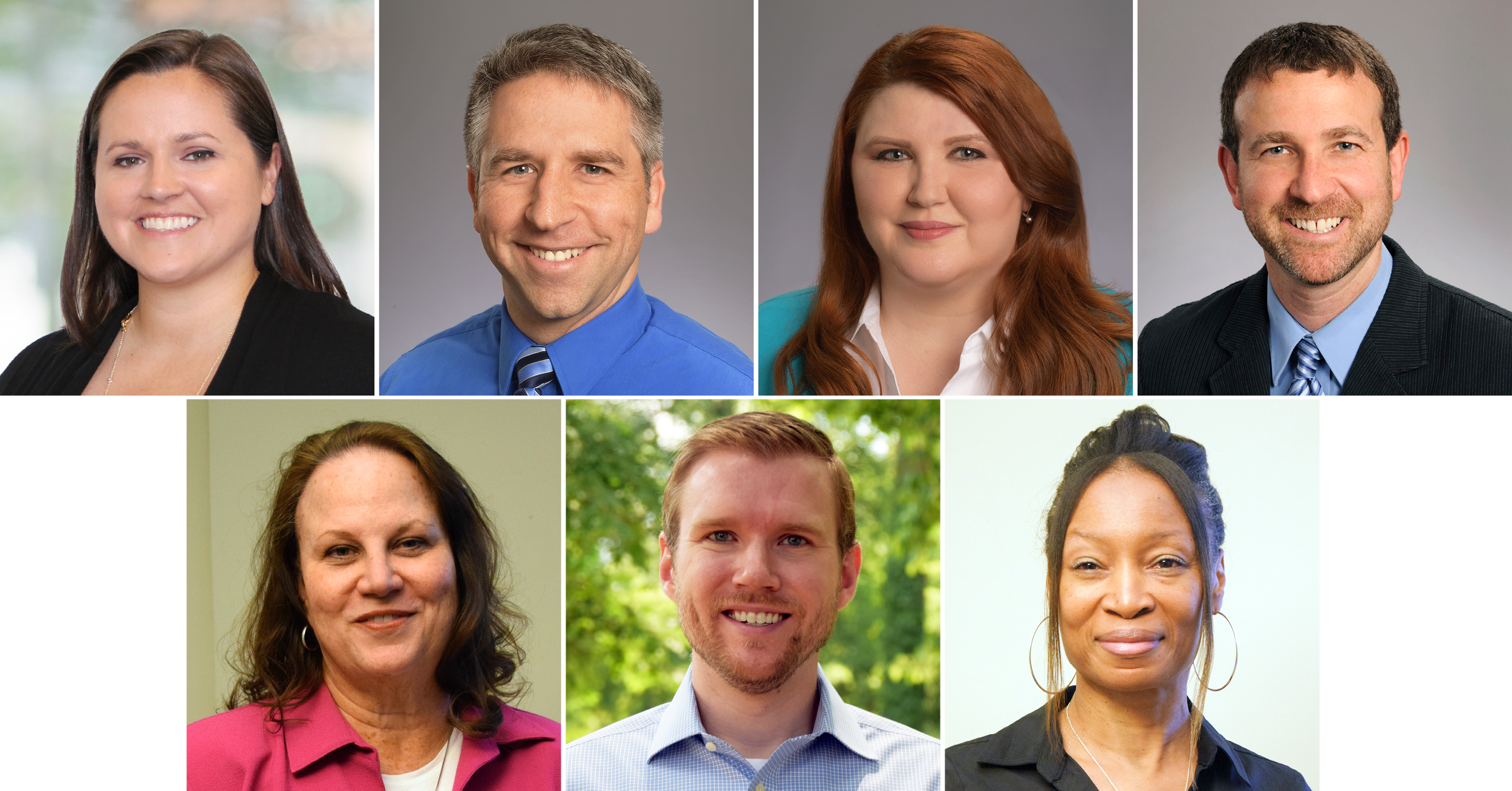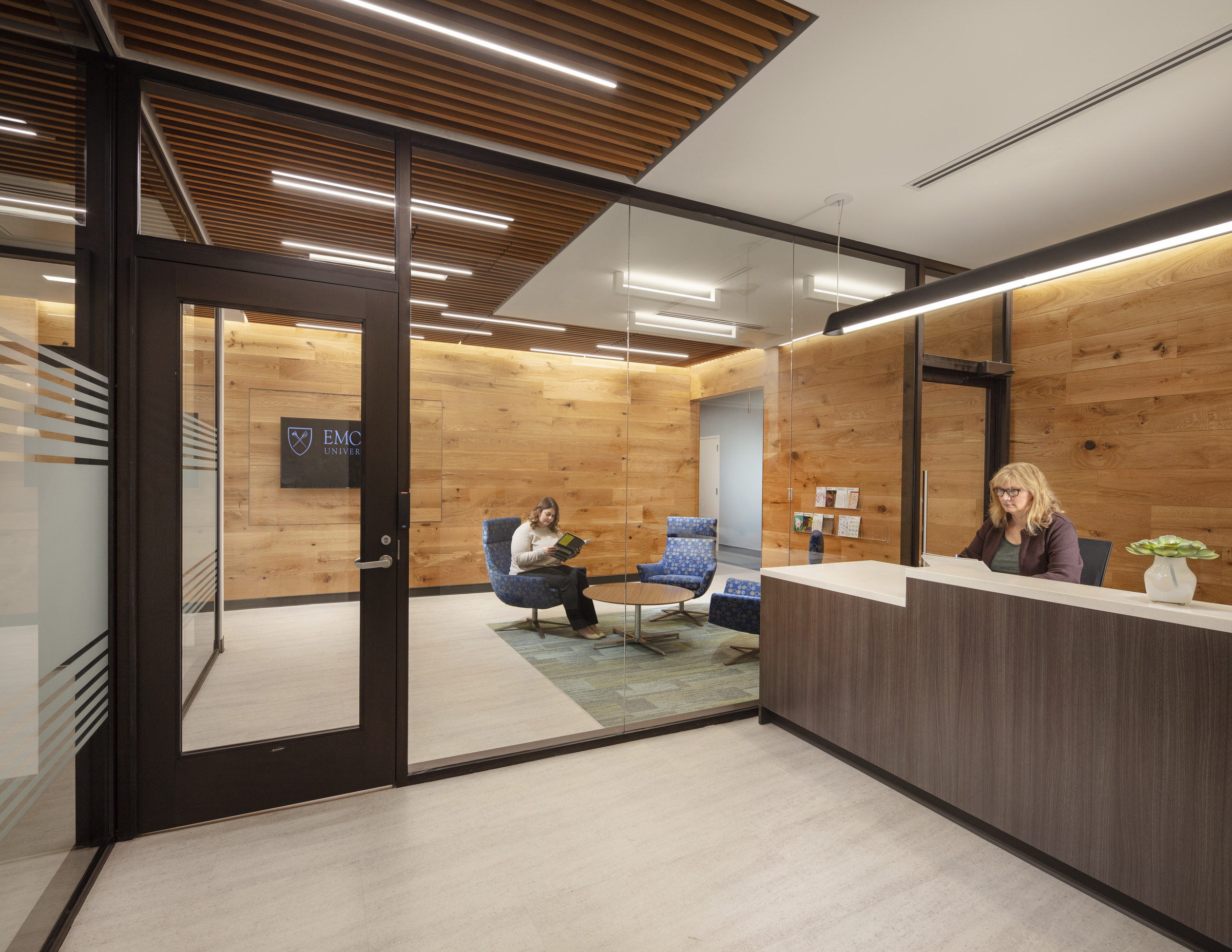
The amount of expensive technology amassed in modern research labs is stunning. A flow cytometer alone can cost hundreds of thousands of dollars.
Fittingly, collaboration and consolidation have become priorities at academic medical centers, with certain labs being designed or renovated to serve as shared resource hubs. These modern, bright spaces can accommodate multiple users, frequent visitors, and high traffic volume, as well as providing common space for brainstorming. The hub provides broad access to advanced technologies, services, and expertise to support investigators from multiple disciplines.
Take the new Shared Resource Hub at Winship Cancer Institute of Emory University, designed by Page. Centrally located on the main Emory Healthcare campus, the 8,800-square-foot, newly renovated suite brings under one roof more than half of Winship's 12 core facilities.
“This renovation project has created a modern space that is designed to support multiple shared resources and collaborative, interdisciplinary workflows," said Winship Deputy Director Adam Marcus, scientific director of the Integrated Cellular Imaging Shared Resource. "It will meaningfully benefit our people and the groundbreaking science our shared resources help facilitate."
 Natural light and common spaces
Natural light and common spaces
The new research hub, on the third floor of Emory Clinic B, has private offices with outside windows and frosted glass that allow natural light to spill into the hallways. Conference rooms provide hybrid meeting technology, large screens, and charging stations. The hallways and meeting spaces have comfortable sitting areas with whiteboards, and the breakroom has multiple tables for eating or science talk.
“Light feels good when you’re in an interior environment,” says Rebecca Doolittle, associate director of facilities at Winship. The previous, older labs located there were dark and “felt like somebody’s basement.”
“They had been built in the 1980s, so the bench layout was antiquated, and there was only one small, shared resource, along with a dry lab and a freezer farm,” Doolittle says.
In the new, spacious wet and dry lab areas, workflow processes and movements are well thought out and informed EYP’s design and equipment placement.
The hub is now the primary location for the Biostatistics, Cancer Animal Models, and Cancer Tissue and Pathology cores, and is an additional site for Flow Cytometry, Integrated Cellular Imaging, and Cellular and Immunotherapy.
“People from all over Winship and Emory come here to use the resources, and while they are here, they’re also brainstorming and coming up with ideas: ’Hey, we can look not only at X, we can look at Y and Z as well,’ ” says project manager Rebecca Ross, part of the Page team that designed the renovated Winship lab space.
Working in proximity helps investigators prevent redundancy and integrate their skill sets, says Finesha Colton-Lee, director of research administration operations at Winship. “Let’s say someone needs help
with tissue processing — they are sitting right by the Tissue Core. You don’t have to have a tissue processing specialist in each unit,” she says. “Also, with flow cytometry, customers will be there using that core, but we have some other cores that use flow cytometry as well, and they would be able to work together to meet those needs at a greater level. We want to look at how we can integrate projects.”

Consolidation leads to collaboration
The new research suite is “very inviting,” says Monica Cloyd, research manager of facilities planning at Winship. “I love that we have consolidated all the shared resources that had previously been scattered across Winship and the Emory campus in different buildings. We’re going to see a big boost of researchers using the resources because they are all right there together.”
Having a common drop-off point for samples has increased traffic flow. “It’s been nice, as people are coming in to drop things off and pick things up, they also start discussing their projects with our team,” says Jennifer Robertson, director of research projects at Emory.
This neighborly feel leads to swapping both supplies and information. “It’s a close-knit group, and there are experts from the different cores who are happy to interact,” adds Robertson, technical director of Winship’s Cancer Tissue and Pathology Shared Resource. “People will say, ‘Oh, you’re with CAMS (Cancer Animal Models Shared Resource), let me ask you a quick question about my study.’
“Just today, someone working in the shared resource next door came over and asked, ‘Can I borrow your oven?’ (And no, this isn’t a kitchen-type oven that bakes cookies, but a countertop lab oven that provides pinpoint temperatures and is used for tasks like drying slides.) “If you don’t know each other, you might not walk around looking for that kind of thing. We’re more of a community now,” Robertson says.
Interdisciplinary work, after all, requires a space that welcomes all disciplines.
“Often, our projects require interdisciplinary expertise involving multiple shared resources, and having an open, modern, and flexible work environment should facilitate and accelerate strong collaborations and research projects,” says Jeffrey Switchenko, director of the Biostatistics Shared Resource at Winship.
 Heavily used spaces
Heavily used spaces
Indeed, part of the purpose of the shared resource hub is to spread awareness of Winship’s core facilities.
To amplify this, says Ross, the Page team designed a welcoming sitting area just past the reception desk, a round table with comfortable chairs backed by a wooden wall, with racks holding fliers that promote each core and contain a link to its website.
“We’re planning an open house to attract more users, and will be offering training in our collaboration areas,” says Doolittle. “We want people to come there and hang out there and find out more about the shared resources.”
Robertson says the staff has a “daily huddle” every morning in the main lab. “Whoever is here will gather around the big monitor, and we’ll pull up our huddle board. The big conference room is also available when we have visiting groups.”
The two manager desks and two touchdown desks are heavily used. “Desk space used to be critically low. You’d work half the time with your stuff in your lap because there was no place to spread out,” says Robertson. “Now everyone has a comfortable place to do their work and even have a glass of water. It’s good for health and morale.”
The labs were carefully designed for maximum efficiency and workflow. “I was impressed with how the activity stations were set up, it was very thoughtful in how the processes would go,” says Doolittle.
This proximity of staff and equipment in a single location benefits investigators who plan to use multiple shared resources to address a complex scientific question, says Gregory Lesinski, associate director for Basic Science and Shared Resources at Winship. “Data and biospecimens can be efficiently passed between the shared resources to maximize use of technology but minimize transit time,” he says.
Planning makes perfect
“With all the big pieces of equipment, it was complex to figure out where things should be, there were so many moving pieces,” says Robertson, who made a PowerPoint diagram for the Page team. “It had to be planned out or it would have been chaos. It was the only way I could make sense of it.”
Because so much of the technology and equipment is new, there’s a bit of a learning curve for hub users, says Colton-Lee. “If you build it, they will come,” she says. “The new technologies are here, and we want to be at the front of the research by helping and supporting the researchers. I’m impressed that Winship as a cancer center would put so much funding and effort into shared resources and research in general. This is truly transformational.”
Being able to offer a well-equipped, bright, inviting research hub to visitors is exciting. But it’s also a nice place to be able to hang your lab coat. “One surprise is how much we like the space,” says Robertson. “We knew it would be good but I think it’s even better than we had hoped.”
To find out more, read this Emory article about the shared resource hub.